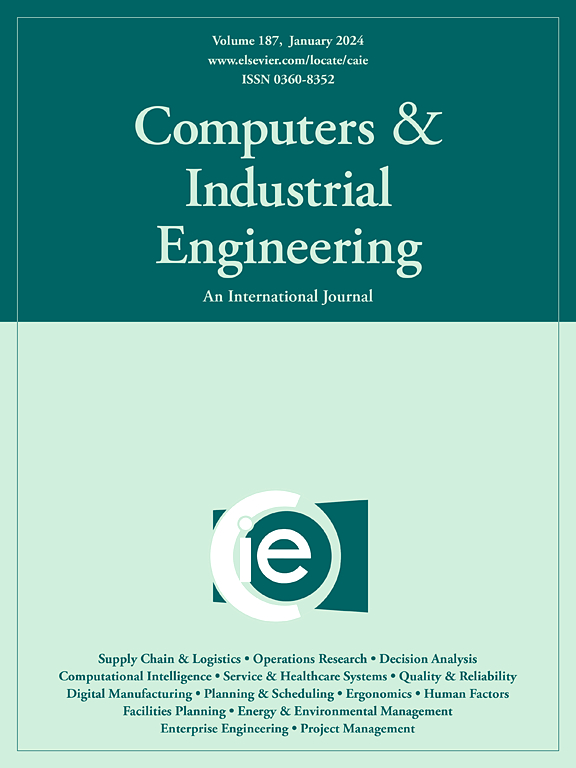从理论到实践:无等待车间无通过约束的最大完工时间优化
IF 6.5
1区 工程技术
Q1 COMPUTER SCIENCE, INTERDISCIPLINARY APPLICATIONS
引用次数: 0
摘要
本文研究了具有不通过约束的无等待作业车间最大完工时间最小化的np -完全问题。由于调度文献与实际应用的巨大差距,我们的研究旨在设计一种高效的数学算法,克服计算障碍,以解决这一问题的最优解。在4个基准数据集上进行的大量计算实验表明,所提出的算法在4小时的时间限制内,始终如一地为包含多达1000个作业的问题提供最优解,并有效地解决了包含多达2000个作业和20台机器的超大型实例。这些有希望的结果不仅验证了算法的有效性,而且强调了它在解决具有实际意义的复杂调度挑战方面的潜力。这项工作的贡献包括发展了一个理论上健全和计算效率高的数学范式,专门针对一个极具挑战性的调度问题,以及在工业环境中的理论理解和实际应用的进步。本文章由计算机程序翻译,如有差异,请以英文原文为准。
From theory to practice: optimizing makespan in no-wait jobshops with no-passing constraints
This paper addresses the hitherto unexplored NP-complete problem of minimizing the makespan in no-wait jobshops with no-passing constraints. Motivated by the significant gap in the scheduling literature and practical applications, our study aims to design an efficient and effective matheuristic algorithm that can overcome computational barriers to the optimal solution of this problem. Extensive computational experiments on four benchmark datasets demonstrate that the proposed algorithm consistently yields optimal solutions for problems containing up to 1000 jobs, and efficiently solves ultra-large instances with up to 2000 jobs and 20 machines within a time limit of four hours. These promising results not only validate the effectiveness of the algorithm but also underscore its potential for addressing intricate scheduling challenges with practical relevance. The contributions of this work include the development of a theoretically sound and computationally efficient matheuristic paradigm tailored to a highly challenging scheduling problem, and the advancement of both theoretical understanding and practical applications in industrial settings.
求助全文
通过发布文献求助,成功后即可免费获取论文全文。
去求助
来源期刊

Computers & Industrial Engineering
工程技术-工程:工业
CiteScore
12.70
自引率
12.70%
发文量
794
审稿时长
10.6 months
期刊介绍:
Computers & Industrial Engineering (CAIE) is dedicated to researchers, educators, and practitioners in industrial engineering and related fields. Pioneering the integration of computers in research, education, and practice, industrial engineering has evolved to make computers and electronic communication integral to its domain. CAIE publishes original contributions focusing on the development of novel computerized methodologies to address industrial engineering problems. It also highlights the applications of these methodologies to issues within the broader industrial engineering and associated communities. The journal actively encourages submissions that push the boundaries of fundamental theories and concepts in industrial engineering techniques.
 求助内容:
求助内容: 应助结果提醒方式:
应助结果提醒方式:


